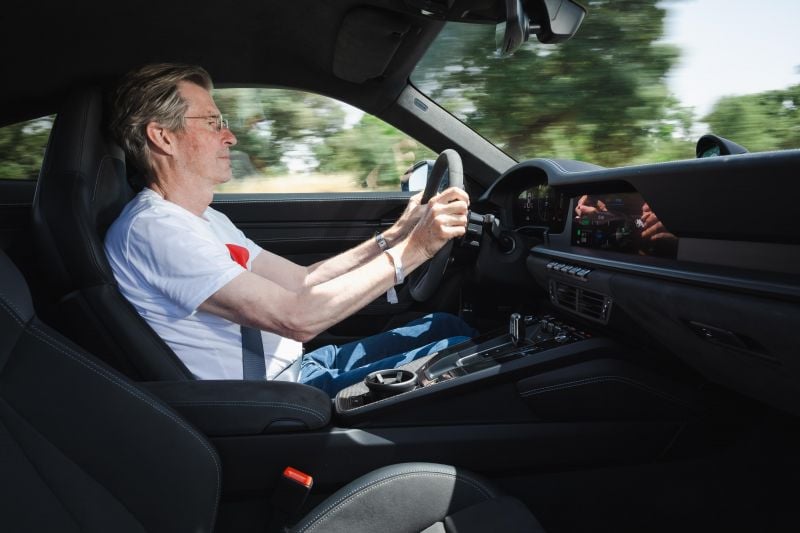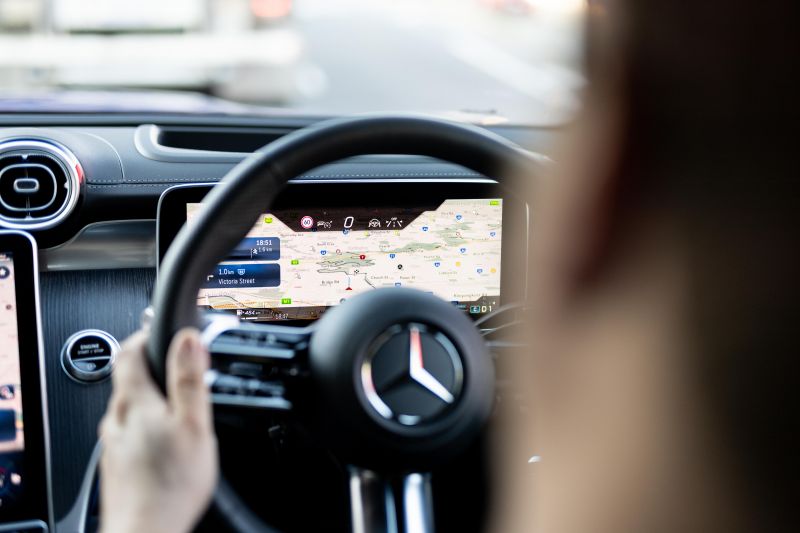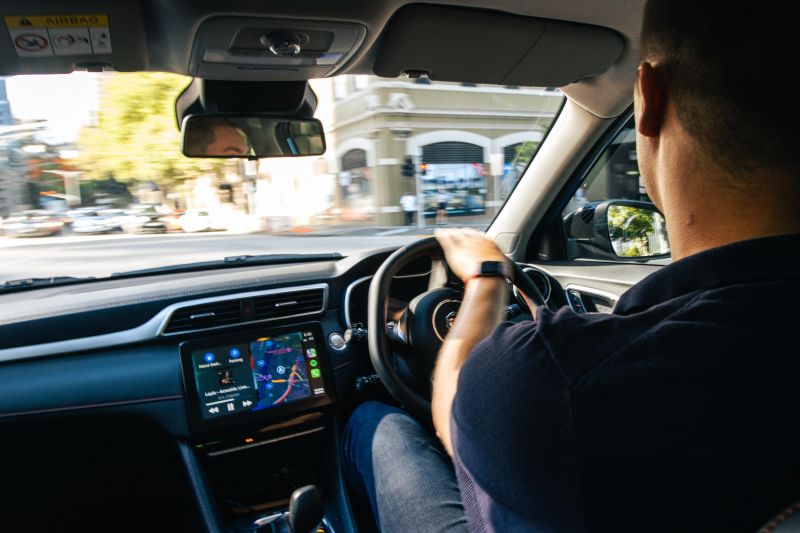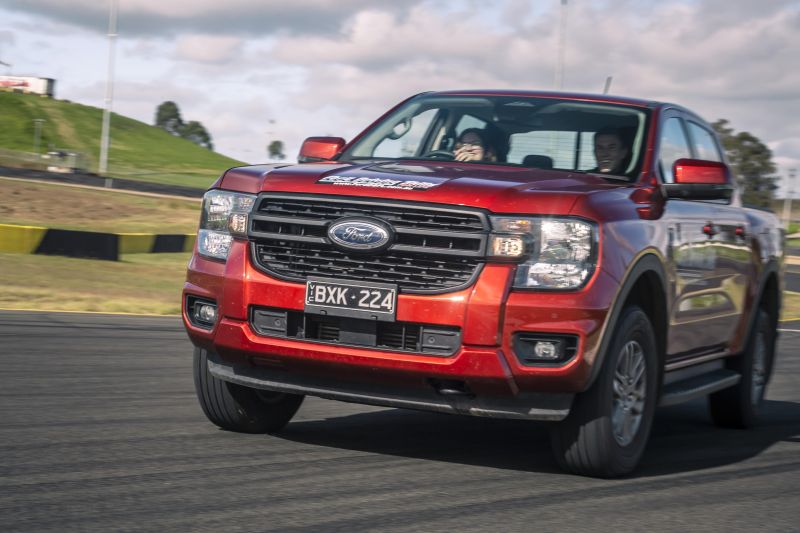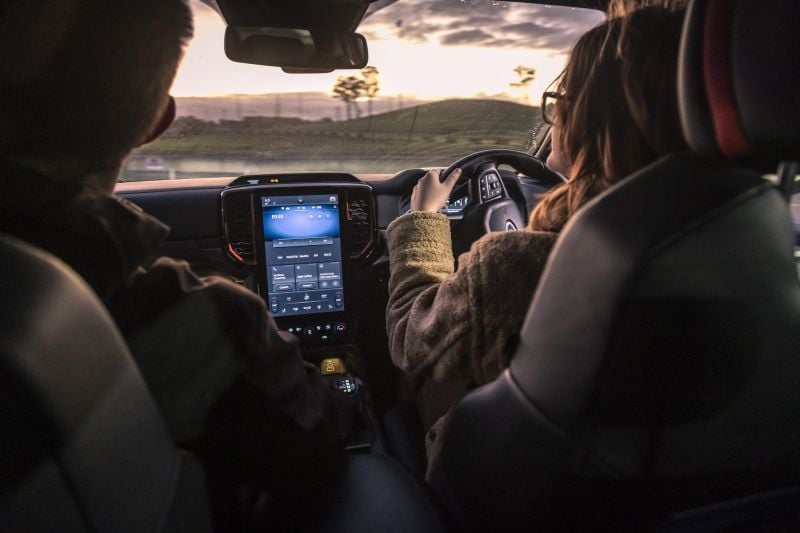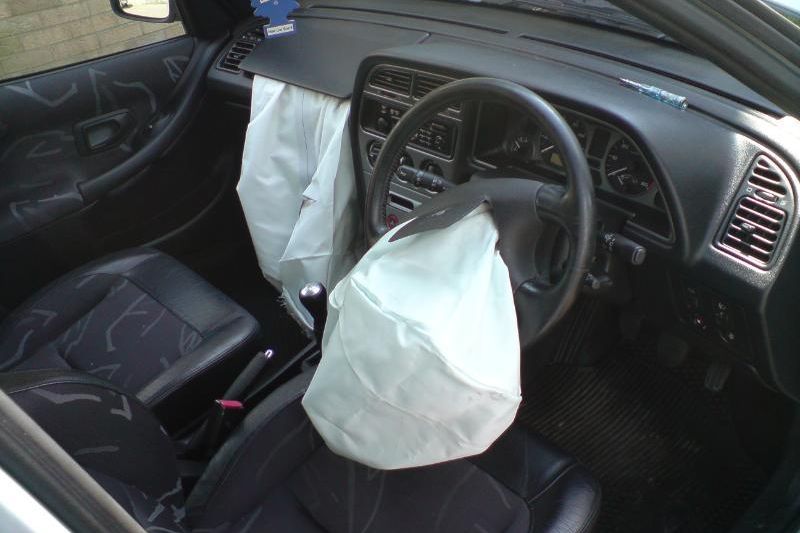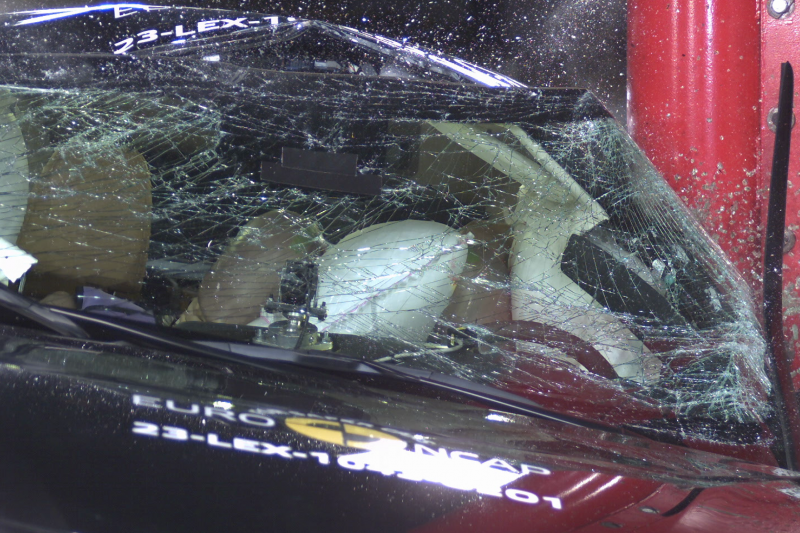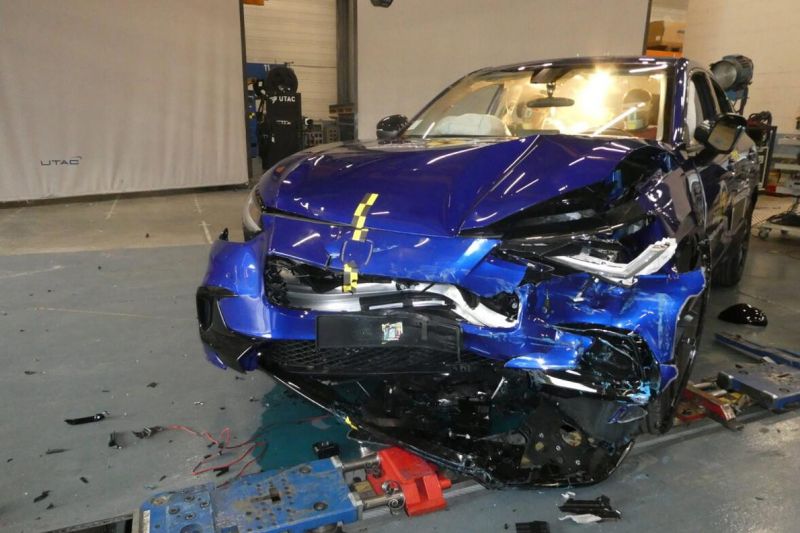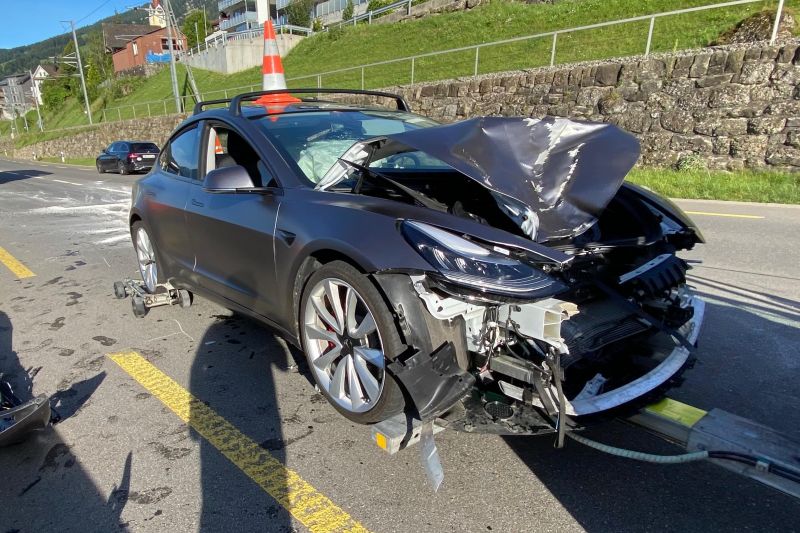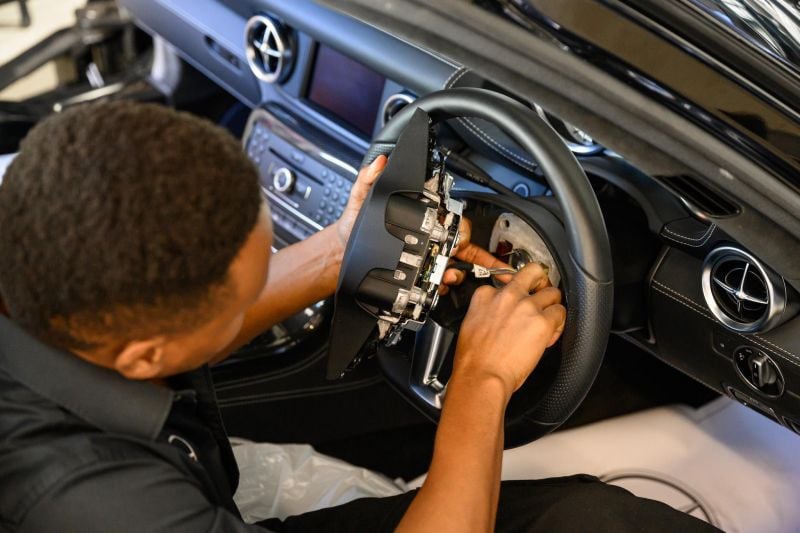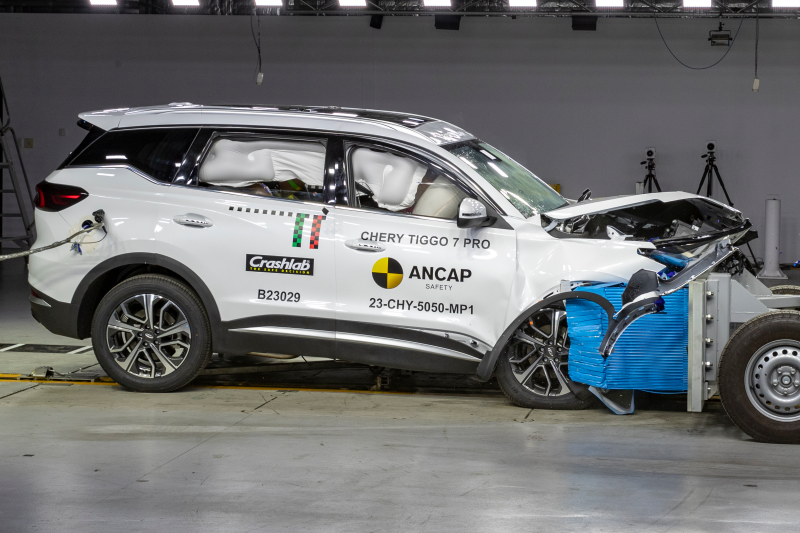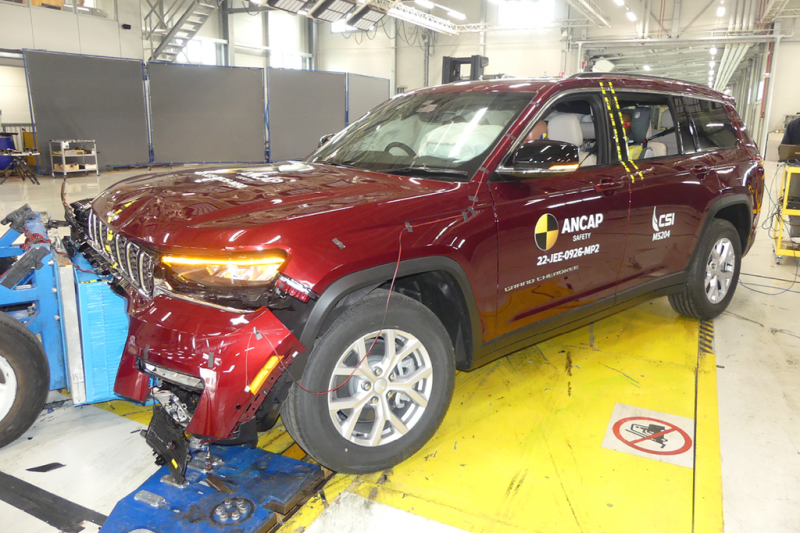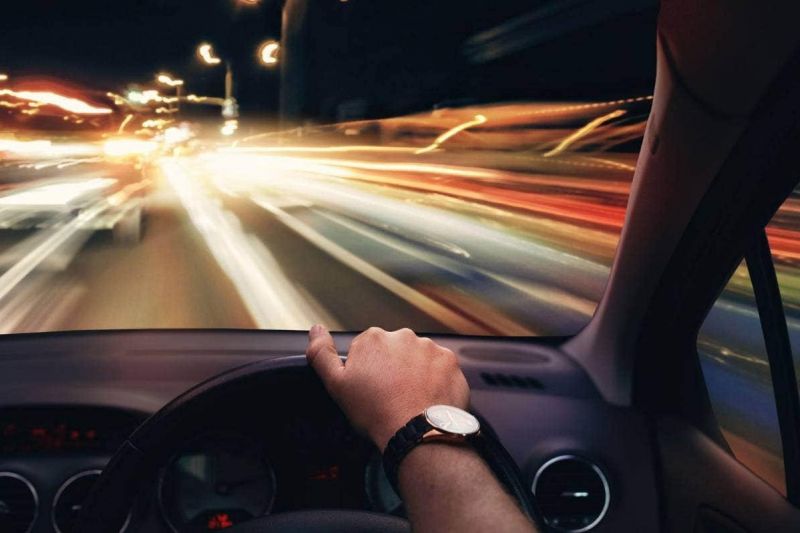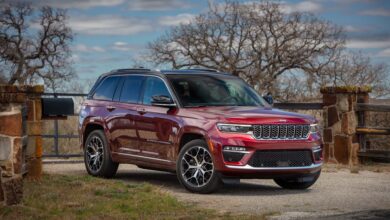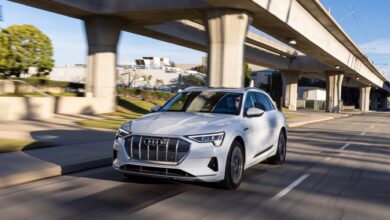The only way to safely hold a car steering wheel
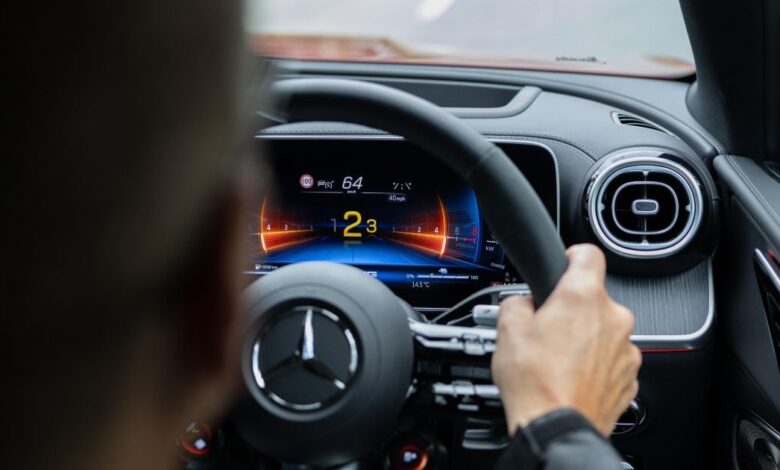
The right time to drive is as simple as setting your car clock for 2:45.
It doesn’t matter if it’s AM or PM, daytime or night, so long as your hands mirror the position on an old-school analogue clock or watch.
So you need to have your hands resting at a quarter-to-three, lightly gripping the wheel at the central position, set 180 degrees apart.
Why?
Hand position is critical for two reasons – controlling the car and staying safe from an exploding airbag.
Both things seem so simple, and they are, but there’s a lot of science and even more of a sporting connection behind using the steering wheel the right way. And it has nothing to do with racing.
Get a grip
Driving is no different from golf, or tennis, or even darts or snooker.
If you’re not holding your wheel the right way then you cannot hope to be a good driver.
It’s all about what’s now called biomechanics.
Just as the right golf grip and swing gives more control and sends the ball further with more control, holding the wheel at quarter-to-three puts you in the right position for full control of a vehicle and a quick response to any potential danger.
Could you imagine whacking a golf ball with one hand on the club? Or playing snooker, or tennis, or squash one-handed?
It’s a similar story in driving.
“You need to keep your hands the same distance apart as your shoulders,” long-time driving instructor James Stewart told CarExpert.
“It’s so you are properly balanced to give you control – especially in an emergency.”
Mr Stewart teaches all sorts of drivers, from teens heading into their L-plates to talented motorsport hopefuls.
He also oversees hot laps on closed racetracks, drift sessions, and personal tuition for people who just want to be better drivers.
He says having your hands on the wheel correctly is bedrock.
“Apart from steering, it’s also the right position for the ergonomics of the car, using controls like the wipers and indicator,” he said.
Wheel position is critical but, since he began in 1998, he has also been coaching on mirrors and foot pedals and even setting the correct seat position.
“Set your seat up for control, not comfort,” he said. “Visibility too.”
The airbag impact
An airbag is your best friend – until it isn’t.
Airbags have save countless thousands of lives, and prevented even more serious injuries, since they were first installed in cars.
They are capable of creating a padded safety cell inside a vehicle that cushions any and all impacts. But an airbag can also be a danger – people have died – if you don’t treat them with care.
Once again, that starts with the correct hand position on the wheel.
You need to be clear of the impact zone and the best way to make sure is to have your hands at quarter-to-three.
“The driver should maintain full control of the vehicle at all times, using a comfortable driving position that avoids fatigue, such as the ‘9 and 3’ method,” Ford Australia vehicle safety manager Franco Moras told CarExpert.
Although Ford isn’t building cars in Australia, it has a huge research and development facility at Broadmeadows. Its prime responsibility are the Ranger pickup and Everest SUV – designed Down Under and built in Thailand – but it has a full development capability to handle a broader range of regional and global development programs.
“The driver should maintain full control of the vehicle at all times, in order to facilitate any accident avoidance steps that can avoid or mitigate accident severity,” said Mr Moras.
“It is unlikely in a crash event that a driver can expect to have the sense of presence to take any additional steps, such as tensing or relaxing muscles or altering posture.
“Crash events are usually unexpected and occur in an incredibly short duration of time.”
Steering to safety
Despite the presence of the airbag, the primary function of the steering wheel is always to control the car.
That is why, according to James Stewart, hand positioning has changed from the early days of motoring.
“I always say 10-and- 2 was right in 1972. But in a modern-day car it’s 9-and-3,” he said.
“The hand position hasn’t really changed, it’s the vehicle that you’re driving.
“In an old car, with a large steering wheel, your hands were high on the wheel for control but also to give leverage for turning.
“That’s all changed in modern cars, with smaller wheels, power steering and better ergonomics.
“The little Holden Gemini went to a smaller wheel in 1979. Some American cars still have big wheels. But the basics are still the same.”
Don’t copy your parents
Most people are taught to drive by their parents, but mothers and fathers can be passing on their bad habits. Including the steering wheel.
“Most people are still hold the wheel at 10-and-2 – because their parents did it,” said Mr Stewart.
“It’s just scary. It’s just a throwback to old cars.
“We put kids in cars they have never driven and they do what their parents do. They don’t even know they’re doing it.
“But don’t believe anything I say. Make me prove it to you.
“I’m not naive. People won’t hold the wheel in the right spot. But at least if they have one hand in the right spot then they have a chance.“
Airbag basics
The operation of an airbag is relatively simple, and it’s not the creation of a cuddly pillow the way you see in some movies.
Some people think it will fire in every crash, but that’s not true.
An airbag is a ’supplementary’ restraint, which means the heavy lifting in an impact is done by the seatbelts.
“The driver airbag is important for managing occupant impact energy caused by occupant contact to the vehicle’s interior. It is only deployed in a severe impact event as determined by the vehicle’s sensing system,” said Mr Moras.
“It does not replace the function or importance of wearing a seatbelt.”
The airbag itself is more than just a big bag.
“A typical driver airbag is 45 litres in volume and approximately 660 millimetres in diameter,” he said.
“The driver airbag is fitted with passive vents which are small enough to allow the airbag to inflate as quickly as possible, while also allowing pressure inside the airbag to reduce at the correct rate upon occupant contact, without letting the occupant contact the vehicle’s interior through the airbag during the event.
“Typically, a driver airbag will have two 25-millimetre diameter vents. The occupant contact with the airbag will cause the water vapour and nitrogen gas to be pushed out through the vents, so the airbag will be deflated after around 150 milliseconds.
“However, the nylon woven membrane is quite stiff, so the airbag may still hold its shape even though its internal pressure has equalised with the atmosphere.”
So, what causes the explosion to create the airbag?
“In a 50km/h front impact event – such as tested by Australian NCAP – the vehicle has detected that a severe impact event is taking place within the first seven milliseconds.
“The sensing system categorises the event as a frontal impact, and determines which restraints are required to be deployed based on severity thresholds.
“Front seatbelt pre-tensioners will be deployed first at approximately 15 milliseconds, followed by driver and passenger airbags at approximately 20 milliseconds.
“The devices are deployed in a timing and sequence which is tuned for the impact severity, occupant size, and seating position.
“The driver airbag fills with water vapour and nitrogen in the next 35 milliseconds just as the occupant’s head and chest comes into contact with the airbag.
“The large airbag surface spreads the forces evenly over the head and chest, protecting the occupants from hard contact with the vehicle’s interior, and the airbag keeps the head correctly supported to minimise neck bending, compression, and tension.
“The primary crash protection event is over within 200 milliseconds, and the vehicle is near to a complete rest after two seconds.”
The physics lesson
“Airbag inflators are characterised by how much pressure is exerted in a 60-litre enclosed volume over time,” said Mr Moras.
“The driver airbag inflator itself is cylindrical disk approximately 60 millimetres in diameter, and 50 millimetres in height.
“A typical 45-litre driver airbag will achieve a peak pressure of around 230 kiloPascals after 50-60 milliseconds.”
To ensure the safety of the occupants, the explosive devices are specially developed. If developed incorrectly, the consequences can be lethal, as evidenced by the Takata airbag scandal.
“The result of the chemical reaction is water vapour and nitrogen,” he said.
The shape and size of the airbag, not just for the driver but also other passengers is carefully designed and developed.
The latest airbag protection is a bag that fires between the front-seat passengers, to protect against them banging heads.
“Driver and passenger airbags deploy through engineered material seams in the airbag cover,” Mr Moras said.
“Once an airbag is deployed by the restraints control module, the high pressure builds up inside the airbag and forces the seams in the cover to tear in a designed pattern to promote a stable airbag deployment.
“The driver airbag in the steering wheel deploys from the centre and, as the airbag inflates, it will take its final position completely covering the steering wheel.”
Nothing is left to chance on the safety front when it comes to airbags.
“Vehicle crash testing is carried out to prove that all aspects of the engineering design work as intended,” said Moras.
“Vehicle manufacturers and airbag suppliers will do limit testing at cold and hot conditions to make sure airbag seam integrity and inflation performance is met.
“Some vehicle crash tests are required to be attended by a regulatory authority witness in order for the vehicle to achieve a type approval which allows it to be sold in those markets.
“Additional physical testing will also be employed to consider a full range of occupant sizes in different seating positions and crash events, using standardised crash test dummies which represent a wide variety of occupants, from infants to small females to large males.”
Keep your feet away
An infamous story from the USA, in the early days of airbags, said a driver was killed because he was driving while smoking a pipe. When the airbag fired into his face… well, you can guess the rest.
It may or may not be true, but it highlights the huge forces and potential for danger.
“Deploying an airbag is a high-energy event, and to minimise risks associated with high-energy events, an abundance of component, sub-system, and out-of-position testing is also carried out extensively, where airbags are deployed in close proximity to the occupant, to ensure injury criteria are not exceeded,” said Mr Moras.
If a driver’s hand is on the opposite side of the wheel, it can be flung back into their face.
The same is true if the passenger-side airbag fires while someone is resting their feet on the top of the dashboard.
“Objects which are in the path, such as aftermarket mats, covers and other accessories, must be avoided as they may influence the airbag deployment sequence,” said Mr Moras.
The end
Modern steering wheels are often shaped to guide the driver’s hands to the correct position.
There can be notches in the rim, a central rib at the quarter-to-three position, and even differences in the shape and padding of the wheel.
“Steering wheels are designed to ensure safe operation at any steering angle,” said Moras.
Even so, and steering away from airbags, good hand placement is always a priority.
According to Mr Stewart, there are plenty of ways to get it wrong.
That can be using an under-hand grip instead of wrapping hands around the wheel, steering from twenty-five to five, or using a single hand.
“When you’re teach people it’s really good. But once they go away it stops,” said Mr Stewart.
“You see people with one hand only at the top of the wheel. And you know because, in the country, a single finger comes up to say hello.
“If you look at the worst-case scenario, with a ute on a narrow country road, having one hand at the top of the wheel makes it difficult to control things if you drop a wheel off the bitumen. There are lots of single-vehicle crashes and rollovers in the bush.
“Holding the wheel at quarter-to-three can make anyone a better driver. You’re saving yourself.”
